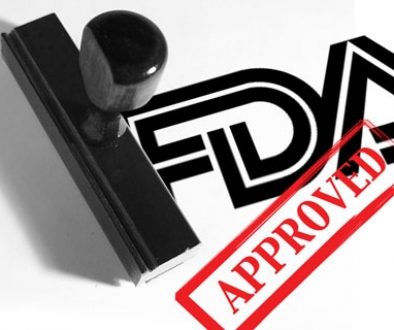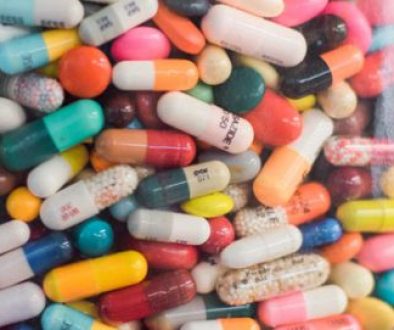This week is National Drug & Alcohol Abuse Week (SM)
This week is National Drug & Alcohol Abuse Week (SM). Though, they cover a wide array of topics, we chose to share their information about the dangers of prescription drugs in an effort to help educate parents about prescription drug abuse among teenagers. Hopefully, we can prevent even one death from an overdose with this information.
Prescription drug abuse is when someone takes a medication that was prescribed for someone else or takes their own prescription in a way not intended by a doctor or for a different reason—like to get high.
It has become a big health issue because of the dangers, particularly the danger of abusing prescription pain medications. For teens, it is a growing problem:
- After marijuana and alcohol, prescription drugs are the most commonly abused substances by Americans age 14 and older.
- Teens abuse prescription drugs for a number of reasons, such as to get high, to stop pain, or because they think it will help them with school work.
- Most teens get prescription drugs they abuse from friends and relatives, often times without the person knowing.
- Boys and girls tend to abuse some types of prescription drugs for different reasons. For example, boys are more likely to abuse prescription stimulants to get high, while girls tend to abuse them to stay alert or to lose weight.
When prescription drugs are taken as directed, they are usually safe. It requires a trained health care provider to determine if the benefits of taking the medication outweigh any risks for side effects. But when abused and taken in different amounts or for different purposes than as prescribed, they affect the brain and body in ways very similar to illicit drugs.
When prescription drugs are abused, they can be addictive and put the person at risk for other harmful health effects, such as overdose (especially when taken along with other drugs or alcohol). And, abusing prescription drugs is illegal—and that includes sharing prescriptions with family members or friends.
There are three kinds of prescription drugs that are commonly abused:
- Opioids—painkillers like Vicodin, OxyContin, or codeine
- Depressants—like those used to relieve anxiety or help a person sleep, such as Valium or Xanax
- Stimulants—like those used for treating attention deficit hyperactivity disorder (ADHD), such as Adderall and Ritalin
Prescription drugs are often strong medications, which is why they require a prescription in the first place. When they are abused, they can be just as dangerous as drugs that are made illegally. Even when they are not abused, every medication has some risk for harmful effects, sometimes serious ones. Doctors consider the potential benefits and risks to each patient before prescribing medications and take into account a lot of different factors, described below. People who abuse drugs might not understand how these factors interact and put them at risk.
Before writing a prescription, doctors take several factors into account:
- Doctors take into account a person’s weight, how long they’ve been prescribed the medication, and what other medications they are taking. Someone abusing prescription drugs may overload their system or put themselves at risk for dangerous drug interactions that can cause seizures, coma, or even death.
- Doctors know how long it takes for a pill or capsule to dissolve in the stomach, release drugs to the blood, and reach the brain. When abused, prescription drugs may be taken in larger amounts or in ways that change the way the drug works in the body and brain, putting the person at greater risk for an overdose. For example, when people who abuse OxyContin crush and inhale the pills, a dose that normally works over the course of 12 hours hits the central nervous system all at once. This effect increases the risk for addiction and overdose.
- Prescription drugs are designed to treat a specific illness or condition, but they often affect the body in other ways, some of which can be dangerous. These are called side effects. For example, OxyContin stops pain, but it also causes constipation and sleepiness. Stimulants, such as Adderall, increase a person’s ability to pay attention, but they also raise blood pressure and heart rate, making the heart work harder. These side effects can be worse when prescription drugs are not taken as prescribed or are abused in combination with other substances—including alcohol, other prescription drugs, and even over-the-counter drugs, such as cold medicines. For instance, some people mix alcohol and depressants, like Valium, both of which can slow breathing. This combination could stop breathing altogether.
How do you know if it’s really abuse?
- If you take someone else’s prescription medication, even when you take it for its intended purposes (such as to relieve pain, to stay awake, or to fall asleep) it is considered abuse.
- If you take your own prescription in a way that it is not meant to be taken, it is also abuse. This includes taking more of the medication than prescribed or changing its form—for example, breaking or crushing a pill or capsule and then snorting the powder.
- If you take a prescription medication to get high, it is also considered prescription drug abuse.
Prescription drugs that effect the brain, including opioid painkillers, stimulants, and depressants, may cause physical dependence that can turn into addiction.
Dependence happens because the brain and body adapt to having drugs in the system for a while. A person may need larger doses of the drug to get the same initial effects. This is known as “tolerance.” When drug use is stopped, withdrawal symptoms can occur. Dependence is not the same as addiction, but it can contribute to a person developing an addiction. It is one of the many reasons why a person should only take (and stop taking) prescription drugs under a doctor’s care.
Carefully following the doctor’s instructions for taking a medication can make it less likely that someone will develop dependence or addiction, because the medication is prescribed in amounts and forms that are considered appropriate for that person. However, dependence and addiction are still potential risks when taking certain types of prescription drugs. These risks should be carefully weighed against the benefits of the medication and patients should communicate any issues or concerns to their doctor as soon as they arise.
Medications that affect the brain can change the way it works—especially when they are taken over an extended period of time or with escalating doses. They can change the reward system, making it harder for a person to feel good without the drug and possibly leading to intense cravings, which make it hard to stop using. This is no different from what can happen when someone takes illicit drugs—addiction is a real possibility. When a person is addicted to a drug, finding and using that drug can begin to feel like the most important thing—more important than family, friends, school, sports, or health.
More than half of the drug overdose deaths in the United States each year are caused by prescription drug abuse. In the last decade, the number of deaths from abuse of prescription drugs has increased dramatically. If you or a friend are in crisis and need to speak with someone now, please call:
- National Suicide Prevention Lifeline at 1-800-273-TALK (they don’t just talk about suicide—they cover a lot of issues and will help put you in touch with someone close by).
If you need information on treatment and where you can find it, you can call:
- Substance Abuse Treatment Facility Locator at 1-800-662-HELP or visit www.findtreatment.samhsa.gov.
Source: NIDA for Teens



